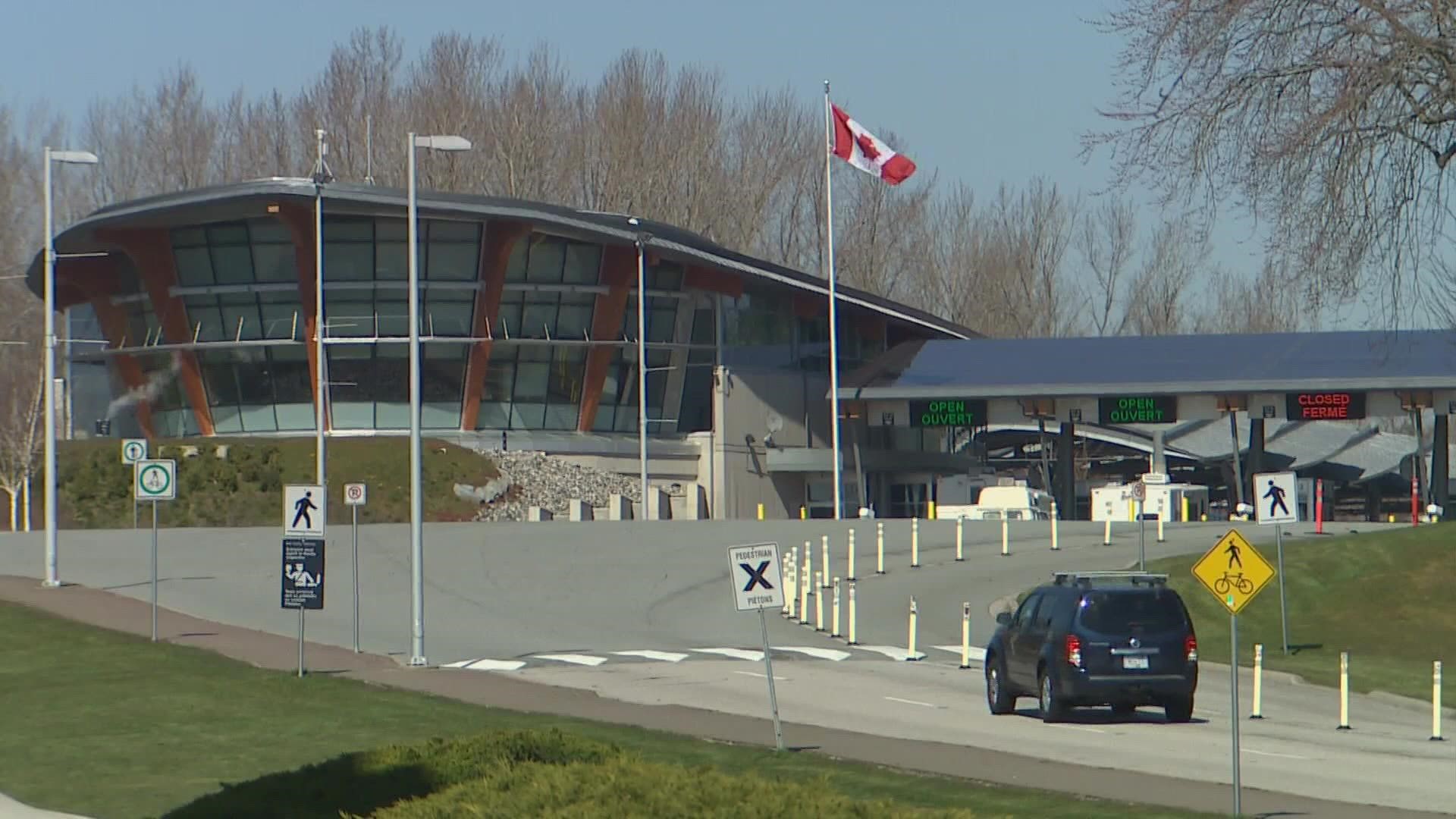BLAINE, Wash. — Washington's border with Canada will reopen on Monday, Nov. 8, after more than a year and a half of being closed to non-essential travelers.
Canada and the U.S. agreed to temporarily close the border in March 2020 in an attempt to curb the spread of COVID-19. The Canadian border reopened to vaccinated American travelers in August, but the Biden administration chose to keep the U.S. border closed as COVID-19 cases remained high.
In October, the Biden administration announced it would reopen the U.S. border to vaccinated international travelers as vaccination rates rose globally.
Many Washington communities were majorly impacted by the abrupt halt in Candian tourism. The extended closure removed a vital source of revenue for several border towns.
It's a given that border crossing data would reflect a precipitous drop in crossings after March of 2020 – border crossings dropped 95% over most ports of entry – but what can the numbers tell us about the impact of the closure in our state
Here's a look at data from before and after the border closure at four Washington crossings referred to as the Cascade Gateway.
Blaine
Before the border closure, the Blaine Peace Arch saw over 258,000 bus passengers, over 3,000,000 passenger vehicles and over 700,000 passengers cross the border in 2019, according to data from the Bureau of Transportation statistics.
For 2020, the number of bus passengers dropped by 88% to just over 30,000. The number of passenger vehicles dropped by 80% to 784,000, and passengers dropped by over 83% to 1.3 million people crossing the border at the Peace Arch that year.
For data available in 2021, just 232,000 passengers and 176,000 passenger cars have crossed the border in Blaine so far.
Monetarily, the Blaine border closure had a significant impact on the overall economy of Whatcom County, according to a report from the Border Policy Research Institute (BPRI) based out of Western Washington University.
The latest complete data shows that while the hospitality and tourism industry suffered nationally, Whatcom County's industry not only lost money from Canadian tourists but also from domestic travelers stopping along their way to Canada.
For the period between March and September 2020, a BPRI estimate suggests Whatcom County experienced a loss of over 506,000 tourists compared to a typical year.
Whatcom County restaurant job losses over that same period in 2020 amounted to 70% of staff on average, according to the report. Over that same period nationally, the industry lost 49% of jobs, according to the Bureau of Labor Statistics.
According to data from the International Mobility and Trade Corridor Program (IMTC) for Whatcom County, most crossings saw slight reductions in commercial vehicle traffic. Blaine saw a 9% reduction in commercial truck traffic between 2019 and 2020.
A different Whatcom County town, Point Roberts, saw a much more severe reduction in commercial activity across the border.
Point Roberts
Point Roberts, an American exclave surrounded by water on three sides and 50 miles from the closest U.S. city, was cut off from its only land border for over a year and a half.
Although Americans were allowed back in Canada several months ago, it brought little relief to the isolated town that relies on visiting Canadians to keep its economy afloat.
According to the Point Roberts Chamber of Commerce, 85% of the town's economy relies on business from Canadians. The number of people entering Point Roberts dropped from nearly 1.5 million in 2019 to just 43,000 in 2021, according to the US Department of Transportation.
A conservative estimate from the chamber of commerce suggests the economic benefit from travelers dropped between 2019 and 2021 by nearly $28 million. As of June 30, it's projected that travelers spent only $870,000 in the town.
Commercial vehicle traffic itself was down 67% in Point Roberts between 2019 and 2020, according to data from IMTC. The average drop in commercial truck traffic for all Washington borders crossings was only 5% on average.
Point Roberts' only grocery store was in danger of closing before the state sent $100,000 in relief money from its strategic reserves.
Lynden and Sumas
Lynden had one bus crossing at its border into Canada for all of 2020, making it the lowest in the country.
The crossing also had an 81% decrease in passenger vehicles in comparison to 2019.
Overall, Lynden saw an 8% decrease in commercial traffic going northbound between 2019 and 2020 and a 14% decrease going southbound.
While most border crossings saw a slight decrease in commercial vehicles, the Sumas border crossing into Abbotsford-Huntington saw no decrease in commercial truck traffic at all, according to IMTC data. Import values at Sumas also increased by 17%, possibly suggesting some goods may be using different ports of entry than they did previously, according to the report.
However, there was an 80% decrease in personal vehicles going across the Sumas border. Despite a similar decrease in pedestrian traffic, the border still saw the second most pedestrians cross into Canada in the United States, with 11,390. So far in 2021, 780 pedestrians have crossed the Sumas border, according to the latest available data.
The Cascade Gateway
Across all four border crossings, passenger traffic dropped 81% between 2019 and 2020. Each crossing saw between a 75%-85% drop in passenger vehicles in each direction, according to IMTC data.
While trends for 2020 can't speak to pre-pandemic border crossing behaviors, data for the next few years may reveal how Americans and Canadians go about traveling differently in the aftermath of the COVID-19 pandemic.

